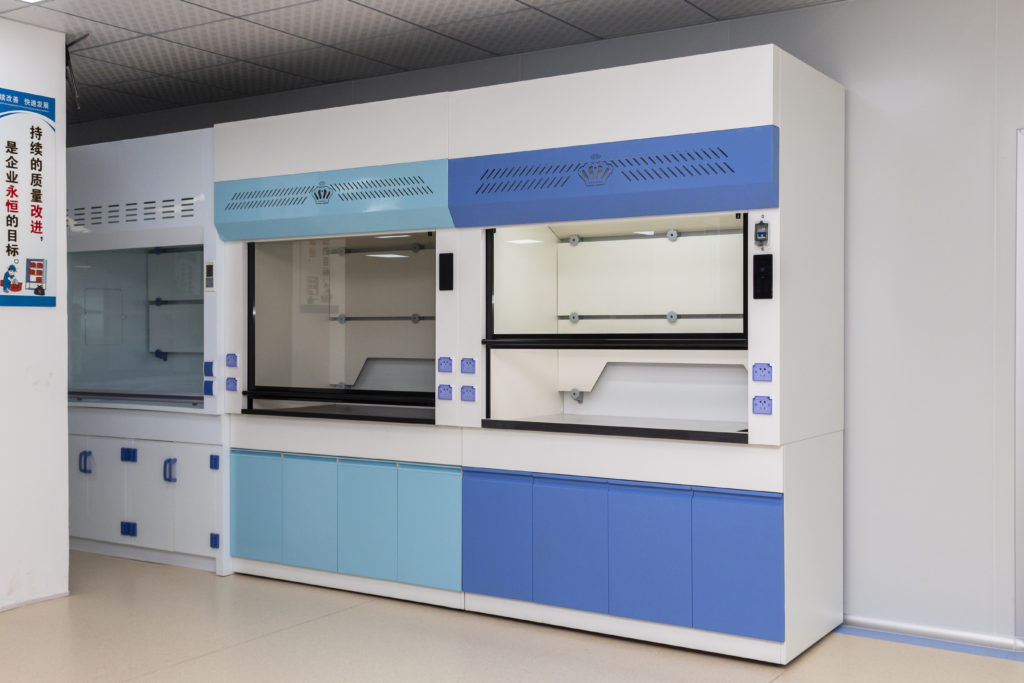Table of Contents
Selecting the right fume hood is vital for maintaining safety in your laboratory by protecting against hazardous chemicals and vapors. However, the process of researching and purchasing the appropriate hood can feel daunting. We’re here to simplify it for you. Below are key questions and considerations to guide you in choosing the best fume hood for your lab. If you need further assistance, contact our product specialists by phone, email, or live chat. Terra manufactures and stocks fume hoods in Fullerton, CA, and also offers leading models from Labconco.
Fume Hood Application: What are you working on?
It’s important to first assess your experimental methods and materials. Indicate which chemicals and solvents you plan to use, their concentrations, and whether they will be used individually, together, or in a mixture. Certain substances, such as Hydrofluoric Acid and Perchloric Acid, may require specialized filtration.
Additionally, understanding the evaporation rate of chemicals is critical. Since different solvents evaporate at varying speeds, failure to account for this can overwhelm the fume hood, leading to dangerous emissions in the lab. To ensure safety, the hood must ventilate chemicals at an appropriate rate.
Evaporation rates are influenced by temperature, so be sure to consider the temperature of the chemicals in use, especially if they are heated or boiled. Also, take note of any exothermic reactions or the presence of open flames. If evaporation rates are unknown, specify the type of containers used (e.g., a 100 ml beaker), surface area exposure, and the duration they will remain open.
Required Work Area: What size fume hood do you need?
The size of the fume hood is determined by several factors:
- Equipment Size: Will equipment be housed inside the fume hood? For example, a benchtop fume hood accommodates smaller items like scales or beakers, whereas a walk-in fume hood is better suited for larger equipment, such as drum containers.
- Number of Users: How many people will work under the fume hood at once?
- Buffer Space: It’s important to perform tasks at least 6 inches behind the sash (the front-mounted safety shield) to maintain a safety buffer.
- Height Clearance: Ensure there’s enough vertical clearance for a larger bench or floor-mounted fume hood.
Ducted vs. Ductless Fume Hoods: How will fumes be filtered and exhausted?
Ducted fume hoods are connected to a remote blower or facility HVAC system, which safely removes hazardous fumes from the workspace. Depending on the chemicals being exhausted, additional filtration systems, such as a facility fume scrubber, may be required. Blowers come in various materials to suit different applications, such as fiberglass for corrosive vapors, epoxy-coated steel for moderate fumes, and PVC or Polypropylene for harsh acids.
Ductless fume hoods, on the other hand, feature integrated blowers and carbon filters to capture vapors. Some models also include HEPA/ULPA filters to allow safe air recirculation back into the room, making them ideal for spaces without HVAC access. However, they should not be used for biohazardous or radioactive materials.
CAV vs. VAV: Which ventilation system should you choose for a ducted fume hood?
- Constant Air Volume (CAV): Provides consistent airflow regardless of the sash position, making it suitable for light-duty tasks. However, CAV systems tend to be less energy-efficient than VAV systems.
- Variable Air Volume (VAV): Adjusts airflow based on the sash height, increasing efficiency by reducing airflow when the sash is lowered. This leads to greater energy savings and lower operating costs over time.
What are the installation and operating costs of a fume hood?
- Installation Costs: Ducted fume hoods typically have higher installation costs since they require connections to an HVAC system, including ductwork, exhaust fans, and possibly a fume scrubber. Ductless fume hoods are more cost-effective to install, as they recirculate air back into the lab and don’t require an external exhaust system.
- Operating Costs:
- Ductless Fume Hoods: The main operating expense comes from filter replacements. Energy consumption from blowers should also be considered.
- Ducted Fume Hoods: Operating costs are tied to the amount of air the blower moves (measured in cubic feet per minute, or CFM). Reducing CFM requirements, such as using a VAV system, can lower operating expenses by minimizing the volume of air exhausted.
What accessories will you need for your fume hood?
Fume hood accessories may include base cabinets, lighting fixtures, airflow monitors, electrical outlets, cup sinks, and service fixtures for water, vacuum, or gas. GZlabfurniture also offers cleanroom-compatible tables and chairs for use with benchtop fume hoods.
For more information or to explore your options, feel free to reach out to our experts. We’re here to help you find the perfect solution for your lab.




